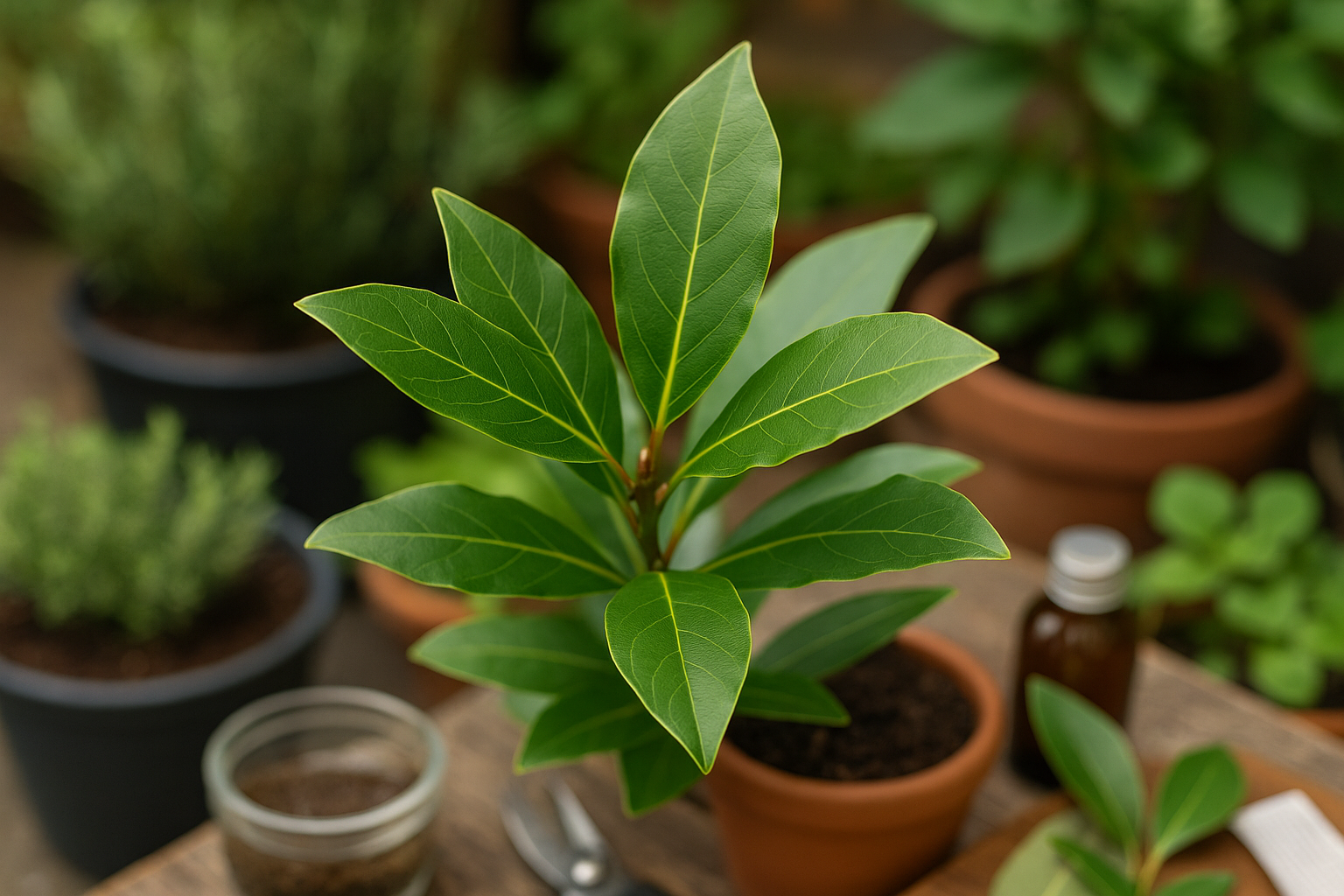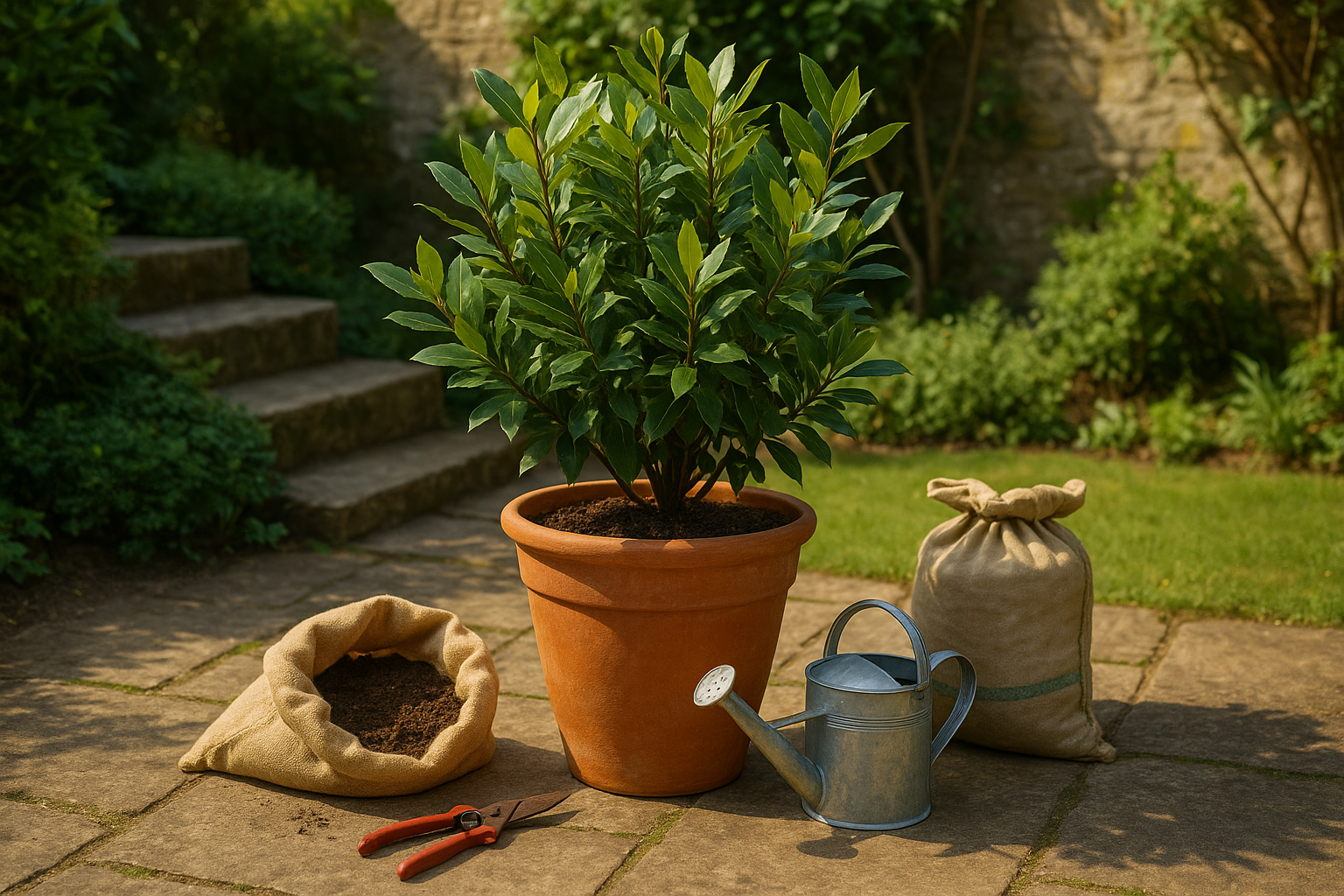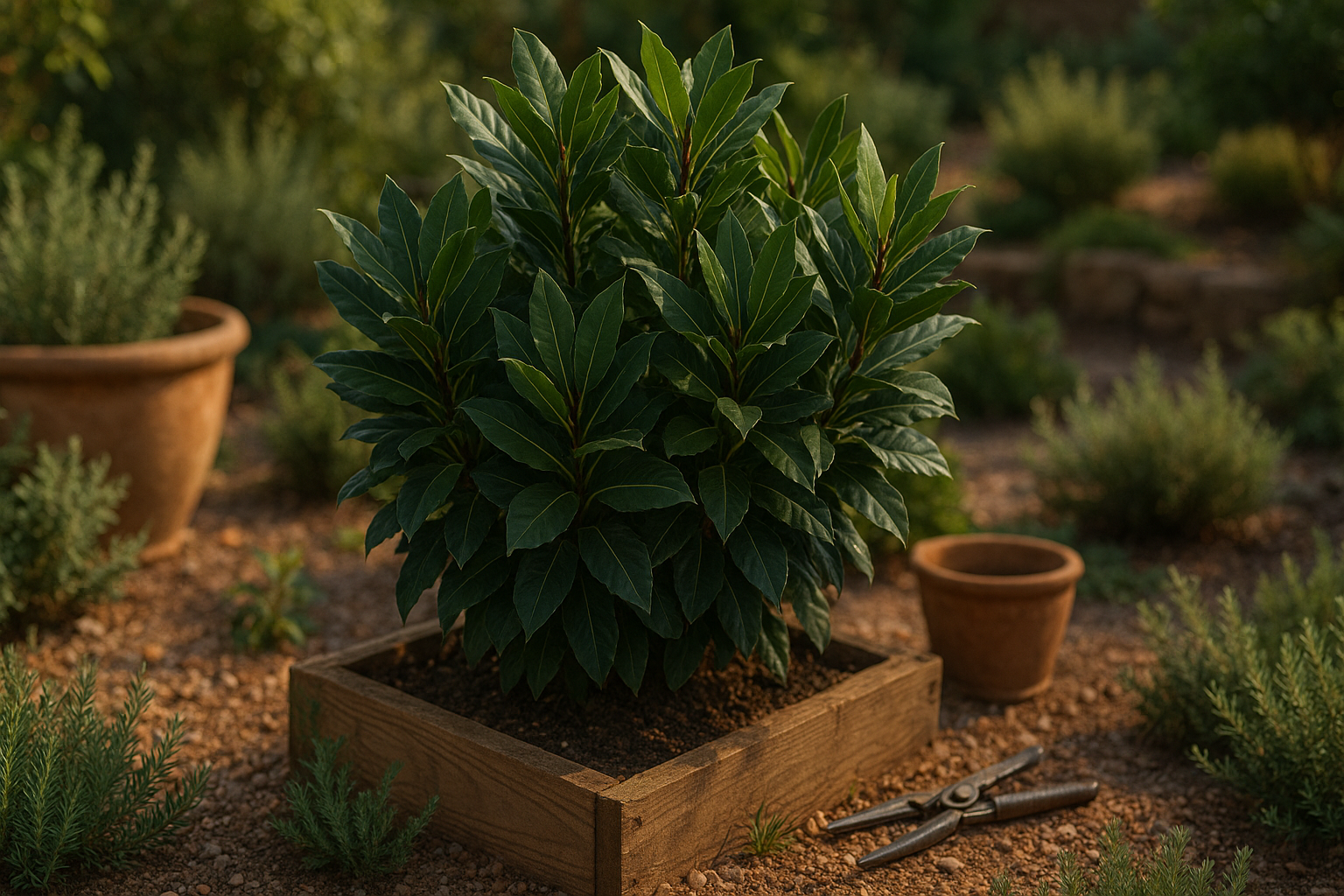What is a Bay Leaf Plant?

The bay leaf plant, known botanically as Laurus nobilis, is an evergreen shrub or small tree native to the Mediterranean region. Its glossy, dark green leaves are a kitchen staple worldwide, commonly used to season soups, stews, and sauces, adding a subtle, aromatic flavor.
But culinary use isn’t its only claim to fame—bay laurel is also prized in gardens for its neat, attractive form. It can be shaped into ornamental topiaries or grown as a natural privacy screen in warmer climates. Additionally, bay leaves have a rich history of medicinal use. Ancient cultures valued them for their digestive and anti-inflammatory properties, though you should always consult a healthcare provider before using them medicinally.
Typically, the plant can reach heights of 6 to 30 feet if left unpruned, maintaining a dense, lush canopy year-round due to its hardy evergreen nature. For home gardeners, bay laurel thrives in well-draining soil and sunny to partially shaded spots. It adapts well to container growing, making it equally suited for an apartment balcony or a spacious backyard.
Perennial vs. Annual
Understanding the difference between perennial and annual plants is key for any gardener aiming for a thriving, low-maintenance landscape. Perennial plants, such as lavender and peonies, live for several years and return each season after going dormant during colder months.
In contrast, annuals like marigolds and zinnias complete their entire lifecycle—from seed to flower to seed again—within a single year, usually needing to be replanted the following season.
Knowing which plants are perennials or annuals helps gardeners plan beds and borders more efficiently, saving time and effort. For instance, perennials often require less attention once established, while annuals allow for quick color changes and experimentation.
This understanding also impacts budgeting and maintenance: perennials tend to be more cost-effective over time, whereas annuals may offer more vibrant but temporary displays.
When it comes to herbs and shrubs, gardeners often wonder: where does bay laurel fit in? Bay laurel is actually a perennial, meaning it can become a permanent fixture in your garden with the right care.
This makes it a great investment for those looking to enjoy fresh bay leaves year after year without replanting each spring.
Is Bay Leaf a Perennial or an Annual?
Bay leaf, also known as bay laurel (Laurus nobilis), is a true perennial plant, meaning it can live and thrive for many years when given the right conditions. In fact, a healthy bay laurel can easily persist for decades, with some well-cared-for trees reaching ages of 50 years or more.
Gardeners sometimes confuse bay laurel with annual herbs because its glossy leaves are often sold dried or fresh at grocery stores, making it easy to overlook the plant’s impressive longevity.
In warm climates—typically USDA zones 8 through 10—bay laurel will remain evergreen outdoors year-round, forming a robust shrub or small tree. However, in colder areas, its perennial nature can be limited by winter frost, which can damage or even kill the plant if left unprotected.
Many northern gardeners grow bay laurel in pots, bringing it indoors during colder months to preserve its lifespan.
It’s important to remember that, unlike annual herbs such as basil, bay laurel rebounds each spring and doesn’t need to be replanted every year. With a little care—regular watering, pruning, and frost protection—your bay tree can become a long-lasting, fragrant staple in your garden or kitchen for many years to come.
Regional Growing Conditions and Frost Protection
Bay laurel thrives as a perennial in USDA zones 8–10, where mild Mediterranean climates with cool, wet winters and warm, dry summers closely resemble its native environment. In these regions—such as parts of California, southern Europe, and the Australian coast—bay trees grow outdoors year-round, requiring only occasional pruning and well-drained soil.
However, gardeners in colder climates face challenges because bay laurel is sensitive to frost. Prolonged freezing temperatures below 20°F (-6°C) can damage or kill the plant. If you live in a cooler area (zone 7 or lower), consider growing bay laurel in pots so it can be moved indoors or into a sheltered garage or greenhouse during winter.
Be sure to acclimate your plant before bringing it inside to reduce shock, and place it in a sunny spot away from drafts. For outdoor plants, mulch heavily around the base with straw or leaves to insulate the roots, and wrap smaller trees with frost cloth or burlap when frost is forecast.
Regularly check soil moisture, as winter winds can dry out container plants faster, but avoid overwatering since bay laurel dislikes soggy conditions. With these simple steps, you can enjoy fresh bay leaves even in climates outside its Mediterranean comfort zone.
How to Grow and Care for Bay Laurel

Bay laurel is a versatile herb that thrives both in containers and garden beds, making it a great choice for a range of gardeners. If you have limited space or cold winters, try growing bay laurel in a large pot so you can move it indoors during frosty months. Just make sure your container has good drainage holes and use a high-quality potting mix, ideally one with a bit of sand for better drainage.
For garden beds, plant bay laurel in a sunny, sheltered spot—these plants love at least six hours of direct sunlight per day. Well-draining soil is essential, as soggy roots can quickly harm the plant. Amend heavy soils with compost and sand if needed.
Watering should be regular but light; let the top inch of soil dry out between waterings, especially for potted plants. Overwatering is a common mistake to avoid.
For fertilizing, feed your bay laurel with a balanced, slow-release fertilizer in spring and again in midsummer. Avoid high-nitrogen formulas that encourage leaf growth but weaken stems.
To keep your plant compact and bushy, prune in late spring by cutting back leggy branches and removing any dead leaves. Regular pruning also helps improve airflow, reducing the risk of pests and disease.
Harvesting and Using Bay Leaves
The best time to harvest bay leaves is in the morning, once the dew has dried but before the sun gets too hot. Select mature, deep green leaves from a healthy bay laurel plant—these have the most robust flavor.
Use sharp scissors or pruning shears to snip leaves individually rather than stripping whole branches, which helps keep the plant healthy. For the strongest flavor, dry the leaves soon after picking.
Arrange them in a single layer on a baking sheet or hang small bunches upside down in a cool, dry, and well-ventilated area away from direct sunlight. In about one to two weeks, the leaves should feel crisp and easily crumble between your fingers.
Store dried bay leaves in airtight glass jars away from heat and light to keep their aromatic oils locked in for up to a year. Fresh or dried, bay leaves add depth to soups, stews, and braised dishes; just remember to remove them before serving, as the tough leaves are not meant to be eaten.
Beyond the kitchen, bay leaves can also be steeped as a tea to aid digestion or used in homemade potpourri blends for a natural air freshener.
Troubleshooting and Common Plant Care Tips
Many plant owners face common issues like pest infestations, yellowing leaves, or slow growth, but these problems can often be fixed with simple adjustments. If you notice tiny bugs, webbing, or sticky residue, your plant might have pests such as spider mites or aphids. Try rinsing the leaves gently with water or using insecticidal soap.
Yellowing leaves may indicate overwatering, poor drainage, or low light. Make sure your pot has drainage holes, adjust your watering schedule, and move your plant closer to a window if necessary.
Slow or stunted growth often means your plant needs more sunlight, fresh soil, or a balanced fertilizer. Rotating your plant regularly for even light exposure can also help boost growth.
Watch for warning signs like drooping, brown leaf edges, or a musty smell from the soil—these could point to more serious issues like root rot or fungal infections. If your plant’s condition doesn’t improve or you’re unsure about the problem, don’t hesitate to reach out to local gardening centers or cooperative extension services. They can offer tailored advice based on your region and specific plant type.
With a little observation and timely care, most plant problems can be quickly resolved.
